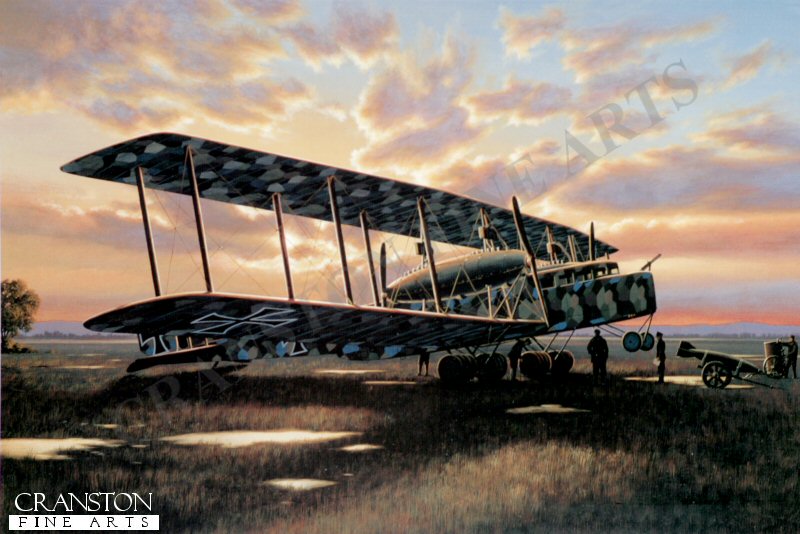- Sku:
- Vendor: Military Aviation Art Prints
Early Night Raiders by Stan Stokes.
One of the strategies utilized by the German military in WW I was the terror bombing of civilian targets in hopes of swaying popular opinion to permit favorable peace terms to be exacted. While this strategy was flawed, the principal instrument utilized in its implementation early in the War was the dirigible. While dirigibles had the range to hit targets in Britain, they became increasingly vulnerable to attack as fighter aircraft and ammunitions performance improved. One of the most successful developers and builders of these dirigibles was Count von Zeppelin. Zeppelin was a visionary in airship and aircraft design, and by the time WW I had begun his interest had largely shifted from lighter-than-air airships to more conventional aircraft designs. Zeppelin was well aware that his giant dirigibles had severe limitations in a military role, including their large size, slow speed, small payload capacity, and most important their high flammability. What was needed was a conventional aircraft capable of flying round-trip to strategic military targets that could carry a meaningful payload. Such aircraft would have to be fast enough and have sufficient defensive armament to evade or fend off enemy pursuit aircraft to complete their missions. The most impressive and successful aircraft in this class were built by the Zeppelin-Werke Staaken, a company formed by Zeppelin in Berlin with Robert Bosch as his partner. The company's first goal was to develop a long-range, six-engine, bomber/transport. By late 1915 German military authorities recognized the need for such aircraft and laid down specifications for their design. Included in the specs were the unique requirements for oxygen apparatus, in-flight servicing of the engines, and for both onboard navigational and communications apparatus. Called R-planes by the military, Zeppelin produced a series of three giants, commonly all referred to as Zeppelin-Staakens. Only one of the R-planes was actually downed by opposing fighters. The R.43 was downed while flying a night bombing mission on August 10, 1918 near Abbeville, England. The R. V series was the largest of the series, but only one aircraft was produced. With a wingspan in excess of 138 feet, it was powered by five 245-HP Maybach engines. Its gross weight at takeoff of more than 28,000 pounds was 15 to 20 times that of a typical fighter aircraft. Despite its size the wing loading of the Zeppelin-Staakens compared favorably to most fighter aircraft of the era. Shown in Stan Stokes' painting is a Zeppelin-Staaken R. VI, the blunt-nosed, 4-engine, version of the German giants. This was the most widely built version of the Zeppelin-Staaken series. Preparing for a night bombing mission at dusk, the crew readies the massive aircraft for a long flight to a target in Britain.
Supplied with signed and numbered certificate of authenticity.
Signed limited edition of 4750 prints.
Print size 16 inches x 11.5 inches (41cm x 30cm)
Have a question?

Early Night Raiders by Stan Stokes.


